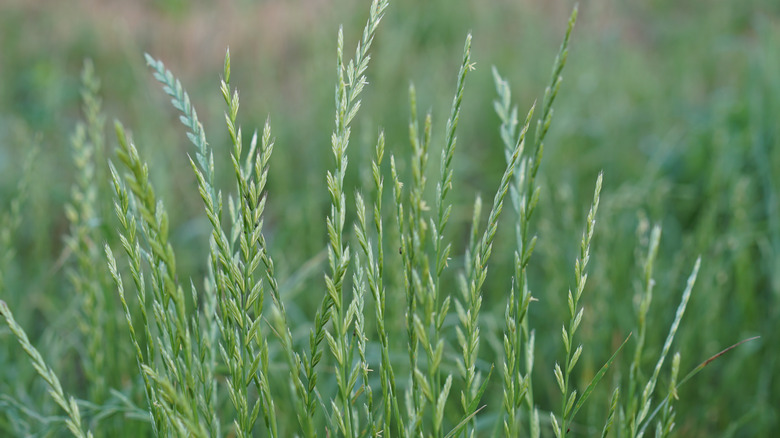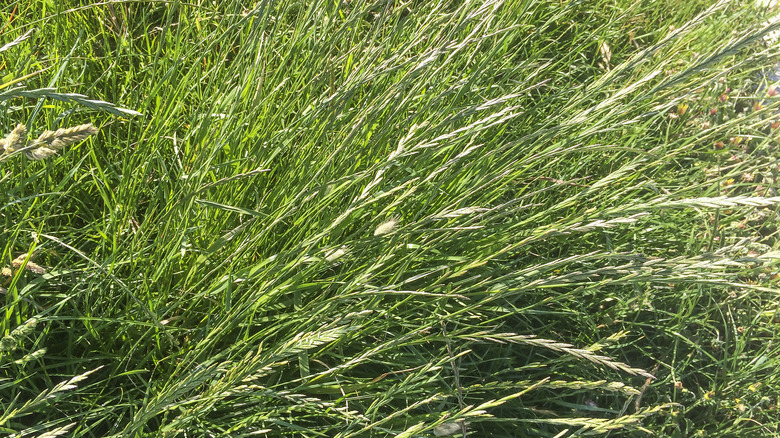Common Winter Problems Your Ryegrass Struggles With, And What To Do About Them
If you're looking for a fast-growing, cool-season lawn grass, perennial ryegrass (Lolium perenne) could be the choice for you. This type of grass requires regular care in winter to prevent infestation or disease. If you assume it will go dormant as soon as snow falls in your area and abandon it for the season, you'll be in for a rude awakening come spring.
While modern ryegrass varieties are hardier than they used to be, according to Oregon State University researchers, they still prefer warmer climates and are vulnerable to disease in harsh winter temperatures. Snow mold and powdery mildew, in particular, are major issues for perennial ryegrass. Because fungal spores can cause allergies, both of these diseases can be as unhealthy for you as they are for your grass.
Most of the problems that perennial ryegrass faces in winter can be treated, but preventative measures are best. Snow or leaf coverings put your ryegrass at a greater risk of disease. In autumn, rake your lawn often to avoid anything covering your grass. However, even careful preventative measures can fail. If your perennial ryegrass develops a fungal or mildew infection, what is the best next step? The answer is often patience and a keen eye — let's keep going to explain why.
Treating common winter diseases for perennial ryegrass
Let's start with snow mold, one of the most common diseases for perennial ryegrass. As noted by Iowa State University researchers, matted and discolored grass patches or grey-colored fungus are signs to watch for here. Fungicides tend to have little effect in winter, and most gardeners recommend avoiding them on home lawns. Because most snow mold infections recover on their own, keep an eye on them until spring. Once all snow has melted in early spring, it may be time to dethatch or aerate your lawn to help dry out your lawn and fight fungal infections.
When it comes to powdery mildew, watch for distorted yellow or brown leaves with a thin, white film. Keep an eye on it until spring, or if you live in an area with no snowfall, regular mowing is a treatment that the University of California Integrated Pest Management Program (UCIPM) highly recommends instead of using a fungicide. You can also use a diluted vinegar spray, which has antimicrobial effects on powdery mildew, as a healthier alternative to fungicides. Keep in mind that not all fungi are harmful. Mushrooms can be a healthy part of your lawn's ecosystem, even if some gardeners label them a cosmetic issue. Unless a fairy ring forms — which can cause lawn damage and may require aeration to treat — the best course of action is to leave fungi alone.

